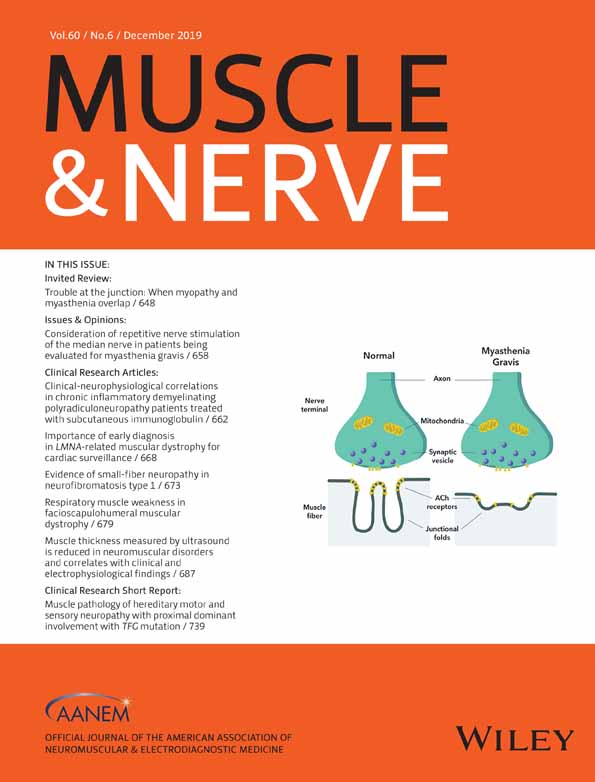Clinical-neurophysiological correlations in chronic inflammatory demyelinating polyradiculoneuropathy patients treated with subcutaneous immunoglobulin
Abstract
Introduction
Despite the well-described clinical efficacy of long-term subcutaneous immunoglobulin (LT-SCIg) in chronic inflammatory demyelinating polyradiculoneuropathy (CIDP) patients, the neurophysiological effects of SCIg have been followed only for a short time and were not correlated with clinical parameters.
Methods
Fourteen CIDP patients were evaluated at baseline and after LT-SCIg administration for 24 to 48 months. Nerve conduction studies were performed and clinical features were assessed for: (a) overall strength, by Medical Research Council sum score; (b) sensory function, by Inflammatory Neuropathy Cause And Treatment score; (c) disability, by Rasch-built overall disability scale; (d) quality of life (QoL), by the EuroQol Visual Analog Scale.
Results
LT-SCIg treatment improved clinical and neurophysiological features, preserving strength and improving sensory deficits, disability, and QoL. Clinical scores correlated with the amplitude of distal motor action (dCMAP) and sensory nerve action (SNAP) potentials.
Discussion
LT-SCIg treatment demonstrates efficacy in maintaining and continuing clinical improvement at 24 to 48 months after start of treatment. dCMAP and SNAP amplitudes represent useful prognostic factors for functional outcome.
Abstract
CONFLICTS OF INTEREST
The authors declare no potential conflicts of interest.




